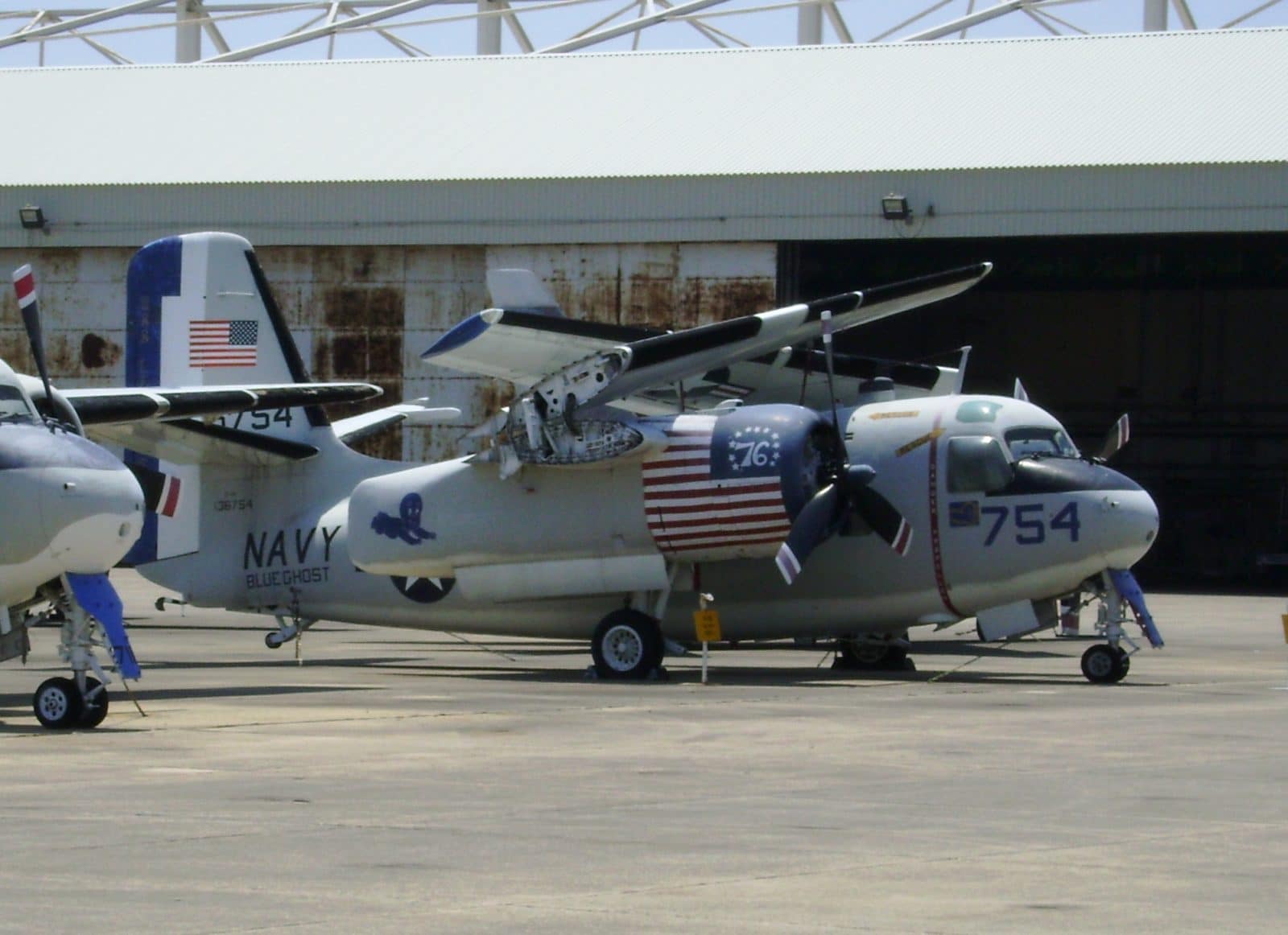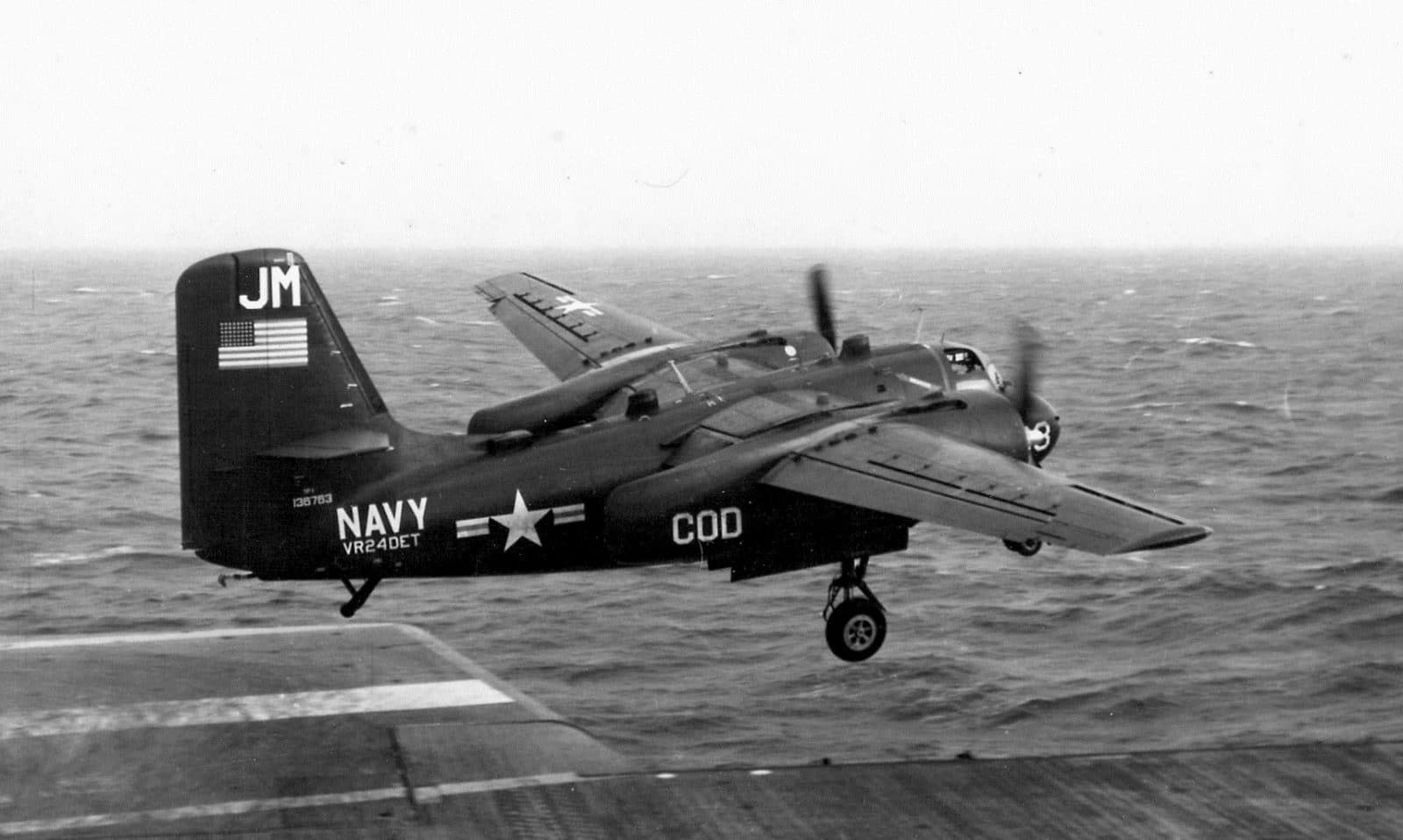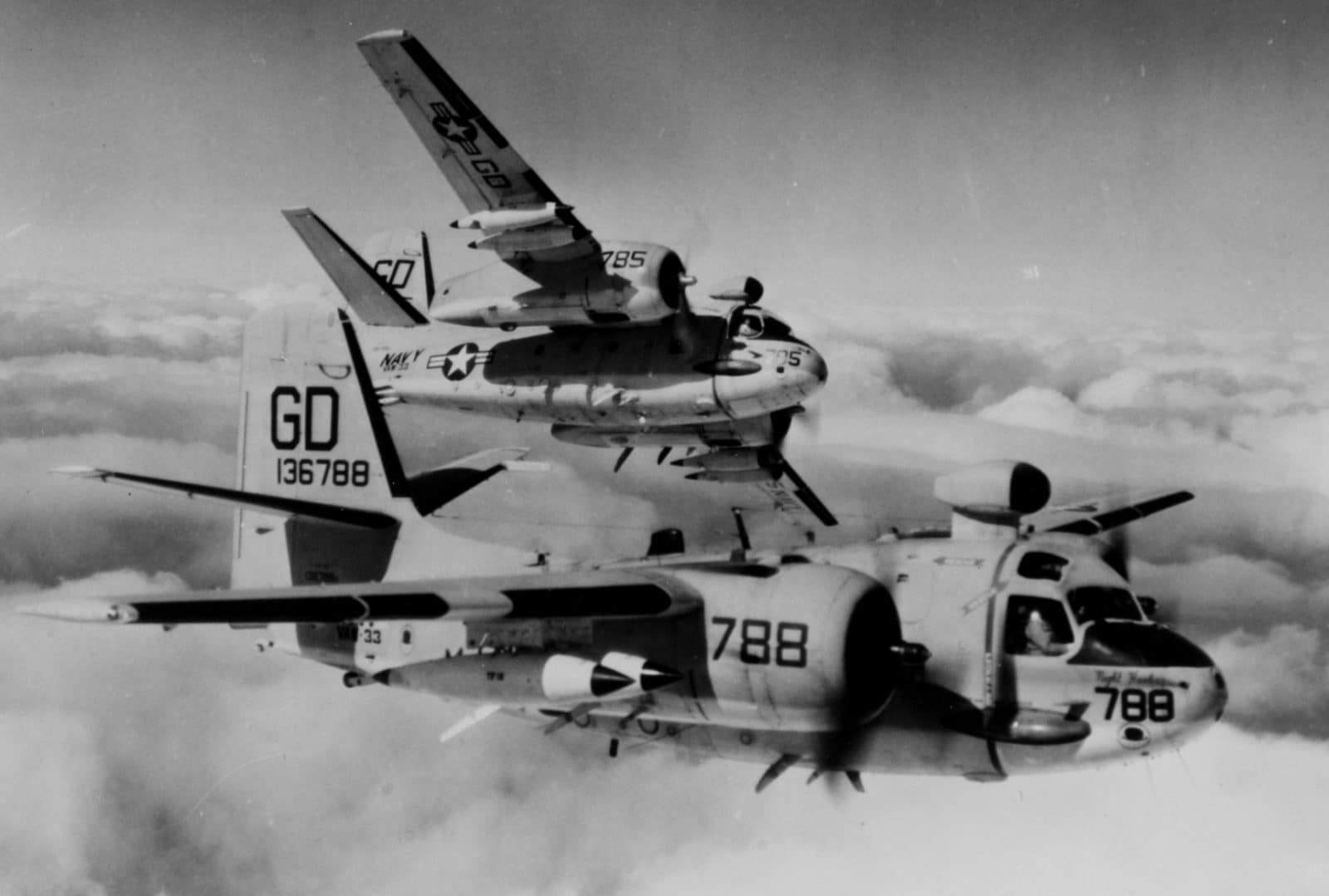This Loud and Proud COD Aircraft Defined the Breed and Served for More than 30 Years
Before Grumman’s TF-1 Trader began flying Carrier Onboard Delivery (COD) hops with the United States Navy in 1956, the company’s single engine TBM-3R Avengers were modified and tasked with carrying freight and personnel from shore bases out to aircraft carriers at sea. As an offshoot of the Grumman S2F-1 Tracker, the Trader was a far more capable COD platform than the Avenger. With high-mounted wings and twin engines, Grumman was able to modify the Tracker fuselage to increase internal volume without having to draw up a completely new aircraft. When the aircraft designation system was overhauled in 1962, the Trader was re-designated C-1A.

Anatomy of a Great COD Aircraft
Other modifications made to Traders included a double aft fuselage door large enough to allow the Trader to haul bulkier items weighing up to 3,500 pounds total, up to nine removable rearward-facing passenger seats, additional fuselage windows, configurable rail-mounted internal bulkheads, and life raft stowage/cargo compartments built into the interiors of extended engine nacelles accessed via hatches located adjacent to the fuselage. Easily distinguished from Trackers by the shape of the fuselage alone, the two aircraft shared wing and empennage designs and were powered by the same Wright R-1820-82WA Cyclone 9-cylinder radial piston engines developing 1,525 horsepower each.

US Navy Postal Service at Sea
Unlike many Navy aircraft, Traders weren’t given a variety of derisive nicknames. They were usually called The Cod, Codfish, and occasionally Mailman of the Fleet. When loaded up with mail and freight the C-1A was capable of about 900 miles range at a cruising speed of 130 knots (150 miles per hour). Traders plied routes from Navy shore installations to aircraft carriers all over the world. The first squadron to employ the new COD was Fleet Tactical Support Squadron TWO FOUR (VR-24) World’s Biggest Little Airline supporting Sixth Fleet carriers in the Mediterranean. VR-24 was based at Naval Air Station (NAS) Port Lyautey in Morocco with detachments at Naval Support Activity (NSA) Naples in Italy and NAS Rota in Spain beginning in March of 1956.

That Ubiquitous Codfish
VR-21 Pineapple Express began supporting Seventh Fleet carriers in the Pacific from NAS Barbers Point in Hawaii with detachments at NAS North Island and NAS Alameda in California and Naval Air Facility (NAF) Atsugi in Japan later in 1956. A VR-21 Trader delivered a Westinghouse J34 turbojet engine to the Essex-class carrier USS Yorktown (CVS-10) in 1958, signaling a new era in COD capability. Although Grumman only built 87 Traders, it seemed as if there were more of them around because they were so ubiquitous.

Training for Electronic Warfare
In the era of versatility that was the 1950s and 1960s, Traders were adapted for a number of additional roles. Four airframes were modified for electronic warfare (EW) training and designated TF-1Q (later EC-1A). These aircraft were festooned with lumps, bumps, and extra antennae all connected to the radar and radio jammers, electronic counter measures (ECM) receiving units and pulse analyzers, directions finders, and warning receivers stuffed inside. Chaff dispensers were carried on underwing pylons. Crewed by two pilots and three ECM operators, these were the Navy’s first dedicated EW training platforms. Two EC-1As were nominally based at NAS Alameda on the west coast and the other two usually flew out of NAS Quonset Point on the east coast.


AE-2 plane crewman pre-com unit Enterprise 1961 C1 bu. no. 146021 beauitful aircraft assigned to ship
I was flown off the USS Lexington in one of these in 1972.
In 1988 I was serving aboard the USS Lexington as a photographer mate. I had the privilege of flying with the commanding officer on the last flight of this aircraft ever in the Navy. The plane is on display at the Naval aviation Museum in Pensacola Florida now. The captains name was C Flack Logan.